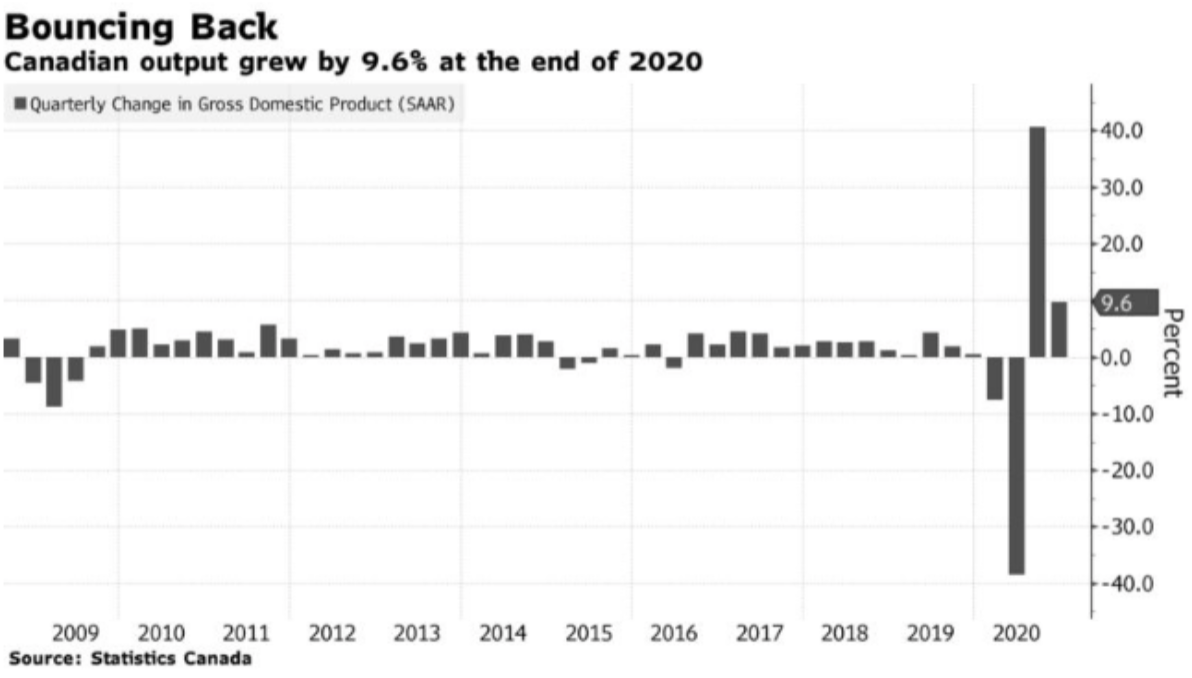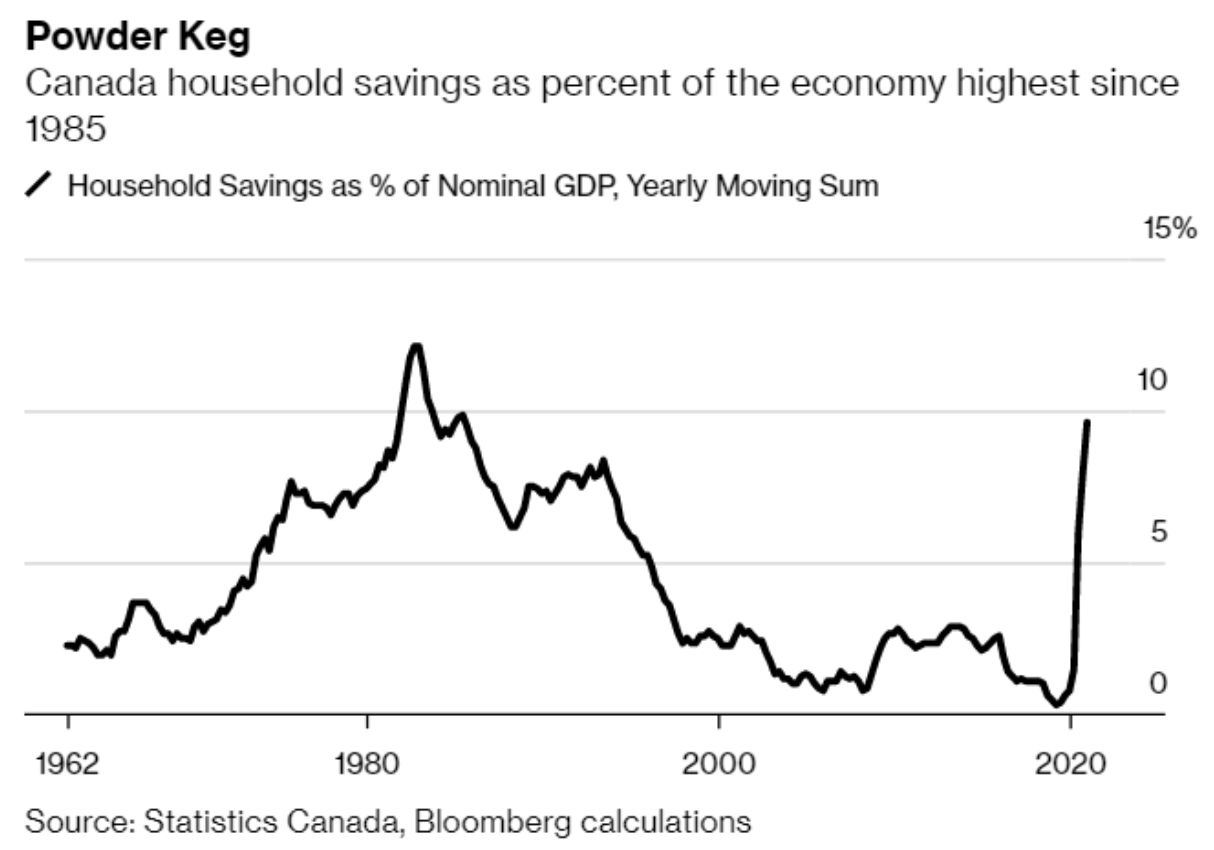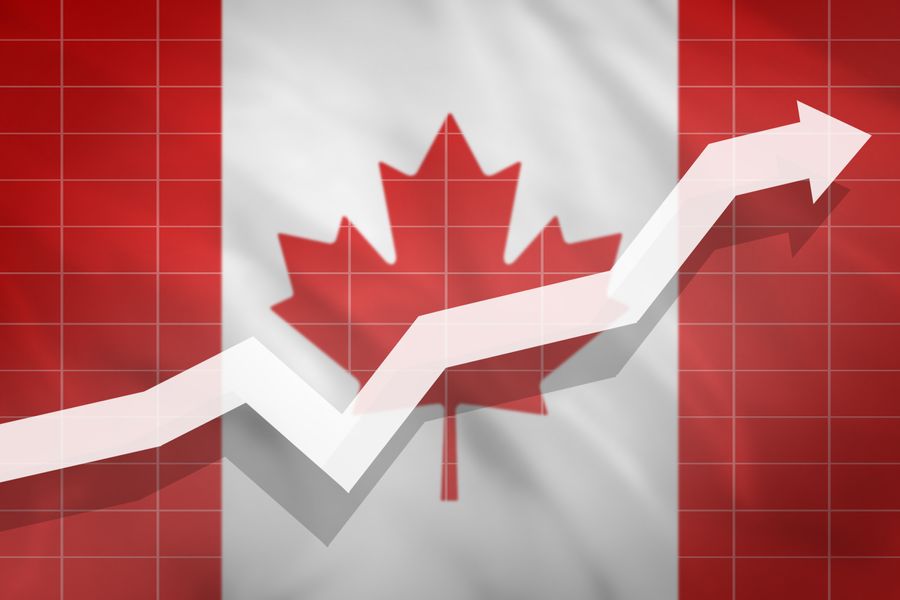This morning’s Stats Canada release showed that economic growth in the final quarter of last year was a surprisingly strong 9.6% (annualized). The surge in growth in January was even more interesting, estimated at a 0.5% (not annualized) pace. If these numbers pan out, it means that Canada did not suffer a contraction during the second wave and ensuing lockdown.
The January figure is noteworthy in that retail sales plunged as nonessential stores were closed in key parts of the country as we faced surging numbers of COVID cases. The strength came from resources, housing and government spending and the mild weather likely helped.
At its last meeting in January, the Bank of Canada (BoC) estimated that Q4 growth would come in at 4.8% (half the actual 9.6% pace) and that there would be a net contraction in Q1 of this year. The strength in Q4 emanated from very hot housing, some business investment in machinery, government outlays and a resurgence in inventory accumulation. Inventory build-up is often seen as a negative sign reflecting weak consumer spending. But maybe firms were preparing for a considerable rebound in demand.
Economists on Bay Street are upwardly revising their growth forecasts for this year, and no doubt the BoC will do so again when it meets next Wednesday. Clearly, the economy has been more resilient than expected. Will that change the Bank’s assessment of the continued need for monetary stimulus? Probably not. But it will likely temper their view that the next rate hike will not be until 2023, a sentiment the BoC has asserted regularly in the past.

Consumer spending was weak at the end of last year, not surprisingly given many stores were closed and a stay-at-home order was in place in several highly populated areas. Households have been hoarding cash. The savings rate declined to 12.7% in Q4 from as high as 27.8% earlier in the year, but that is still way above normal. Accumulated savings will provide a backstop for robust consumer spending once the economy opens up.
For all of 2020, the Canadian economy contracted by 5.4%–a substantially harder hit than in the U.S., which posted a 3.5% decline.

Bottom Line
The stronger-than-expected economy raises the potential that there is enough stimulus in the economy. The Trudeau government appears to be determined to hike government spending meaningfully in the next federal budget (likely coming this Spring). We know it is the government’s predilection to juice the economy for another couple of years, but that could well deserve a rethink.
Dr. Cooper is Chief Economist of Dominion Lending Centres, Canada’s leading mortgage and leasing company with more than 2,600 members offering free expert advice across the country. In this role, Dr. Cooper helps Canadians understand the issues surrounding their most important financial decision— buying a home.
Named “the megawatt celebrity economist” by Canada’s national newspaper—and repeatedly cited as one of the most influential women in Canada, Dr. Cooper served as Chief Economist and Executive Vice-President of BMO Financial Group where she was responsible for global economic and financial forecasting as well as country-risk and industry-risk analysis. She joined BMO Financial Group in 1994 when it acquired Burns Fry, where she had been Chief Economist, Co-Head of Fixed Income and the first female director of a Bay Street investment firm.
Dr. Cooper has an M.A. and Ph.D. in Economics from the University of Pittsburgh. She began her career at the Federal Reserve Board in Washington, D.C. where she worked very closely with then-Chairman, Paul Volcker and subsequently joined the Federal National Mortgage Association (Fannie Mae) as Director of Financial Economics.








